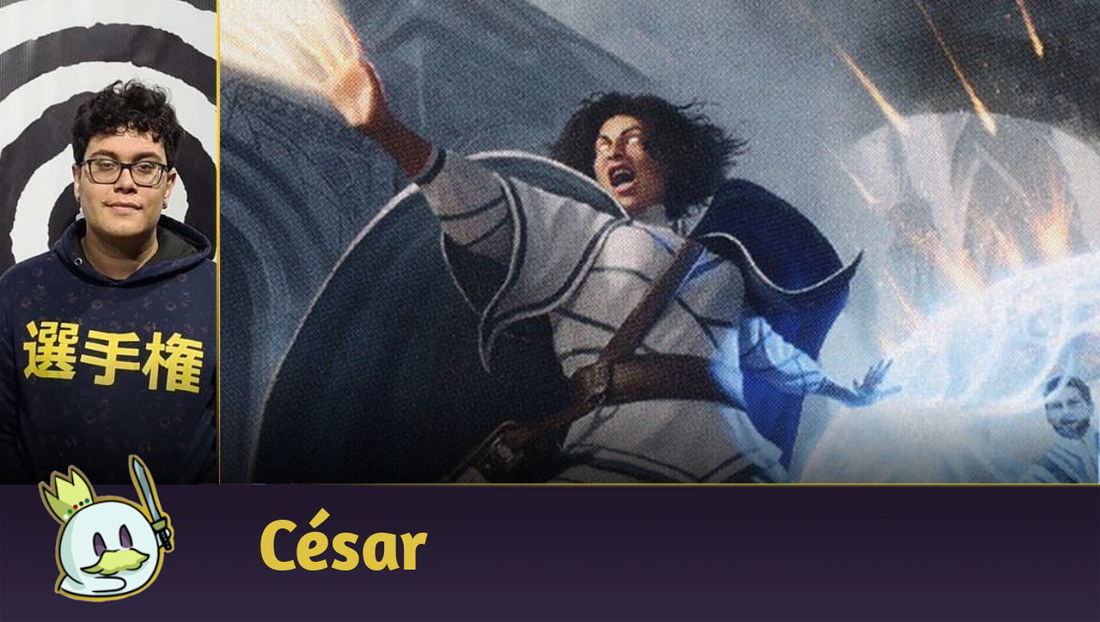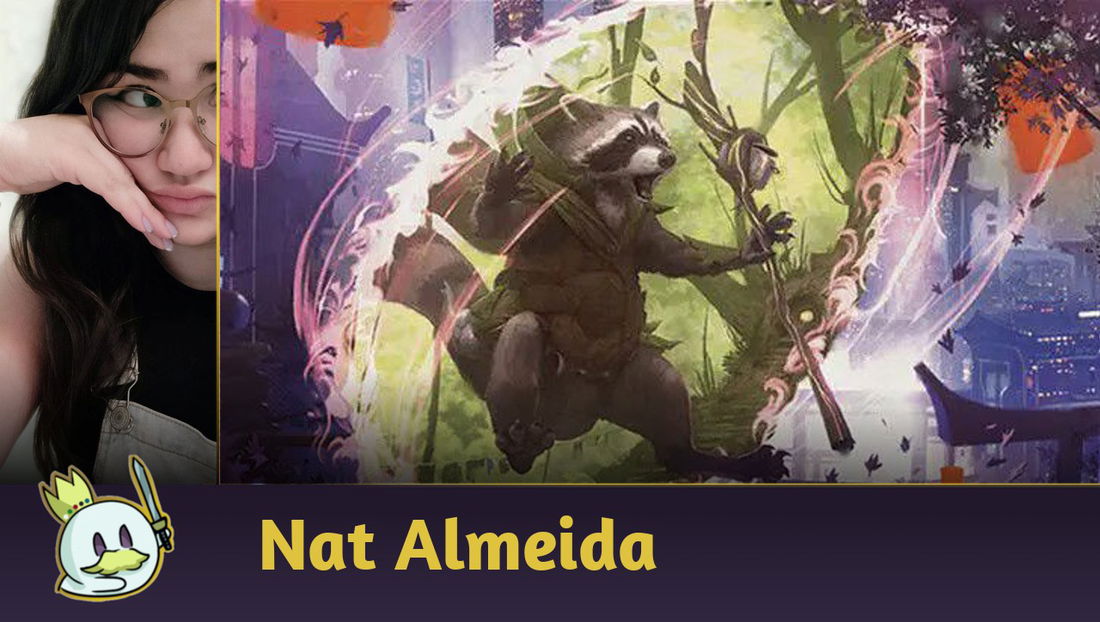As formats evolve and develop, it's natural that some lists that were once at the top need to adapt and add new cards to stay in the competitive scene. Sometimes, this happens because a deck is very strong in the Metagame, but other times, it's because the environment develops to the point where its core strategy has an inherent weakness that other decks naturally prey on.
This is the case with Boros Convoke. Cards like Sunfall and Temporary Lockdown are common in Standard lists, and cheap sweepers like Glistening Deluge, even when not used exclusively for that matchup, have a terrible side effect on the archetype, leaving it in a bad spot when compared to other more flexible Aggro decks in the current Standard.
Searching for an answer to these problems, players have been looking for splashes for 
The Decklist
This is the list I've been using on Magic Arena for the past few weeks, and it follows the pattern we've seen for Jeskai Convoke since the Standard Open that took place in Japan during the first week of Bloomburrow.
But after all, why do we need 
Normally, Invasion of Gobakhan and Urabrask’s Forge are used in the sideboard to mitigate this problem, but they are not enough: every player already expects the forge in Game 2 and prepares accordingly with Abrade and other effects, or already has maindeck answers with Glissa Sunslayer while Invasion of Gobakhan is too slow for some games and/or irrelevant compared to the aforementioned Lockdown and Sunfall.

So we resort to splash. Protect the Negotiators is our key card and serves to delay those key plays that usually cost us the game while putting a body on the battlefield. With specific changes in the Metagame, it is possible that other cards like Negate could take its place, but the flexibility and interaction with our proactive plan helps us not to have to hold our game too much and, consequently, give extra turns to the opponent.
The essence of the deck is still the same, splash is a necessity to deal with Standard as it is today and our mana base is consistent enough to have access to 
Maindeck

If there's another reason for the splash on Boros Convoke, it's to increase the consistency with which we have artifacts for our interactions. Warden of the Inner Sky improves greatly with Spyglass Siren and Novice Inspector allowing us to activate its ability on the second turn while also increasing the frequency with which we can Convoke Knight-Errant of Eos earlier after playing Gleeful Demolition on the second turn.
Spyglass Siren isn't a Thraben Inspector, but if we're already running 

The rest of the creatures are the same as Boros Convoke: Resolute Reinforcements to put more creatures into play, Imodane’s Recruiter to increase the power of all creatures and go for the hit-kill and Sanguine Evangelist as another pump that we find with Knight-Errant of Eos and which is resilient against removal.
As a one-of, we have Yotian Frontliner to increase our artifact count and allow for some more explosive turns with Unearth and Nurturing Pixie to reuse ETBs, especially Knight-Errant of Eos and Imodane’s Recruiter.

I’m not usually a fan of Warleader’s Call in Convoke decks, but the Metagame has been demanding a faster clock and more reach in games where our opponents have too many creatures. Two in the maindeck seems ideal and complements Sanguine Evangelist, but it can’t be found with Knight-Errant of Eos.
Case of the Gateway Express It's still the most interactive removal Convoke has today, and it handles almost any creature in the current format as long as we keep our board full. If that's not possible, it's the first side out of the game.
I've noticed an increase in Azorius Artifacts and Boros/Mono White Midrange with a lot of Caretaker's Talent and Temporary Lockdown in MTG Arena ranked that made me consider Requisition Raid in the maindeck, but it doesn't seem like a collective trend in the format, and it could just be the platform's matchmaking doing matchmaking things. It might be worth it in Best of One where we have more Temporary Lockdown lists since we have more Aggro, but in that case, it's better to invest in Boros Convoke.

Our mana base is perfect for playing three-color Aggro in Standard today and rarely creates speed concessions on key Convoke turns, but there is a small price to pay for its consistency: sometimes you have a starting hand with two or more painlands and their damage adds up, especially in matchups against other Aggro decks. So we need to choose our mulligan wisely in those games.
My general rule of thumb is that if I'm on the Play and can build up a lot of pressure with plenty of creatures in the first three turns, keeping two or more painlands will pay off, especially if accompanied by Knight-Errant of Eos. But if we have a more reactive hand and/or our third turn is not as impactful or if we are on the draw and our interaction is slow, it may be better to consider the mulligan searching for a less punishing hand.
Another important detail in the sum is what means of pressure we have to offer: Warden of the Inner Sky can be answered easily in the first turns and/or blocked frequently, so it is not a good card with painland hands against Aggro - we need to “go wide”, and this is achieved with Knight-Errant of Eos and Imodane’s Recruiter, Case of the Gateway Express or Warleader’s Call.
Jeskai Convoke is as redundant as Boros in its game plan, so we can risk up to a mulligan for five on the draw and still win games against Aggro, and two fewer cards will be better than a Shock every turn with your lands.
Sideboard
Numbers in the Sideboard have been changing frequently, so don't take them as pre-defined. By consensus, you need the following cards:

Witchstalker Frenzy fits perfectly with our go-wide plan while also punishing the opponent’s go-wide and is in a range line that deals with Slickshot Show-Off and Beza, the Bounding Spring with the same card.
Get Lost serves a similar purpose for an extra mana, but deals with Temporary Lockdown and other enchantments. Its tokens can matter in some matchups, and splitting it with Destroy Evil is an option.
Elspeth’s Smite is your cheap removal against Aggro. Torch the Tower is another option, but its range requires sacrificing a creature. Some players opt to play a protection pump on their creatures and/or a card that takes them out of three damage range before attacking anticipating a Smite, but this is not a common trend in all games.

Destroy Evil also deals with enchantments without providing any compensation to the opponent and answers creatures such as Archangel of Wrath, Atraxa, Grand Unifier, Sheoldred, the Apocalypse and Beza, the Bounding Spring in addition to Aclazotz, Deepest Betrayal.
Requisition Raid is a one-of for dealing with artifacts and having a more proactive card. There are other options in this slot, but it seems like a good addition to the current Metagame.

Protect the Negotiators is the reason for our splash and comes into play in most matchups where we can use it to our advantage to slow down the opponent and where Invasion of Gobakhan, essential to deal with power-reliant sweepers, is not enough.
Sideboard Guide
Golgari Midrange
IN

OUT

Domain Ramp
IN

OUT

Gruul Prowess / Mono Red Prowess
IN

OUT

Azorius Control
Na Play:
IN

OUT

Na Draw:
IN

OUT

Rakdos Lizards
IN

OUT

Wrapping Up
That's all for today. If you have any questions or suggestions, feel free to leave a comment!
Thanks for reading!















— Comentarios 0
, Reacciones 1
Se el primero en comentar